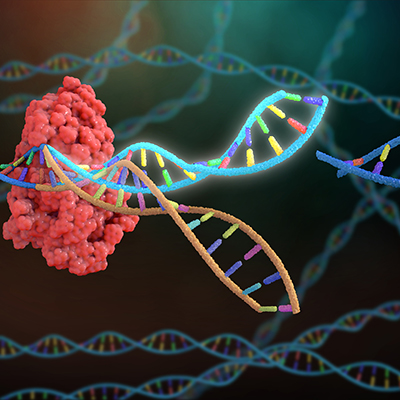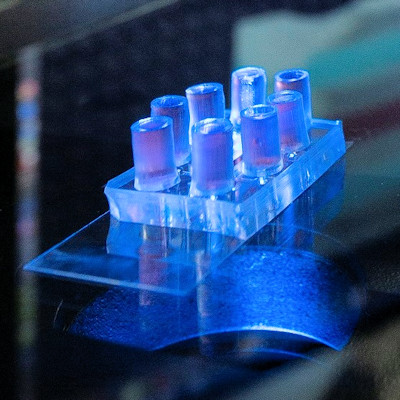 Loss of protective protein linked to age-related changes in the eye
Loss of protective protein linked to age-related changes in the eye
A study in mice has shown that the loss of a protein that protects retinal support cells may drive aging-associated diseases of the retina such as macular degeneration. Read More
 Study shows potential of CRISPR-Cas9 tools for synthetic gene control, cellular engineering
Study shows potential of CRISPR-Cas9 tools for synthetic gene control, cellular engineering
Rice University researchers were able to use deactivated Cas9 (dCas9) proteins to target key segments of the human genome to synthetically trigger the transcription of human genes. Using dCas9 proteins, researchers have revealed important details about human promoters and enhancers. Read More
 Ribosome profiling expands pool of potentially protein-coding regions of DNA
Ribosome profiling expands pool of potentially protein-coding regions of DNA
Using ribosome profiling, researchers from 20 institutions worldwide have identified more than 7,200 previously unrecognized gene segments of the human genome that may code for new proteins. Read More
 CRISPR reveals interconnected map of immune feedback loops, regulatory networks
CRISPR reveals interconnected map of immune feedback loops, regulatory networks
The disruption of thousands of genes using CRISPR-Cas9 gene editing has revealed a map of how human immune cells function. The resulting map could reveal the collections of genes that need to function properly to prevent immune diseases. Read More
 Large DNA insertions in CRISPR-edited cells could increase cancer risk: study
Large DNA insertions in CRISPR-edited cells could increase cancer risk: study
CRISPR-Cas9 can cause large rearrangements of DNA through retrotransposition to theoretically trigger tumor development, according to a paper published in Nature Communications. Read More
 Global consortium creates 'largest' zebrafish genetic atlas to support human disease research
Global consortium creates 'largest' zebrafish genetic atlas to support human disease research
An international consortium of 27 laboratories called DANIO-CODE has created an atlas of genetic data on zebrafish to support research into conditions including cancer, heart disease, and neurodegeneration. Read More
 Cell and gene therapy sector remains strong despite challenges: ARM CEO
Cell and gene therapy sector remains strong despite challenges: ARM CEO
The cell and gene therapy sector is “quite strong” despite the regulatory, investment, and manufacturing challenges facing the industry, according to Janet Lambert, CEO of the Alliance for Regenerative Medicine (ARM). Lambert spoke with ScienceBoard.net about developments in the industry. Read More
 Machine learning model opens door to real-time detection of cell therapy contamination
Machine learning model opens door to real-time detection of cell therapy contamination
Researchers at the Massachusetts Institute of Technology’s Singapore site have developed a new way to detect adventitious microbial contamination in mesenchymal stromal cell cultures. By using machine learning to predict if a culture is contaminated in near real-time, the approach could enable testing to take place during the production of cell therapy products. Read More
 Tokyo team challenges 10x Genomics with new single-cell RNA sequencing method
Tokyo team challenges 10x Genomics with new single-cell RNA sequencing method
Researchers have developed a single-cell RNA sequencing method that is designed to tackle the cell sampling bias of existing techniques and deliver high-precision data, according to a paper published on June 27 in Nature’s Communications Biology journal. Read More
 Mammoth Biosciences looks to build next-generation CRISPR toolbox
Mammoth Biosciences looks to build next-generation CRISPR toolbox
This month marks the 10th anniversary of the development of CRISPR as a genome-editing tool. While the technology is fairly new, it has made major strides over the past decade, said Mammoth Biosciences co-founder and CEO Trevor Martin in an interview with ScienceBoard.net. Read More
Conferences
Science Briefs
Member Rewards
Earn points for contributing to market research. Redeem your points for merchandise, travel, or even to help your favorite charity.
Research Topics
Interact with an engaged, global community of your peers who come together to discuss their work and opportunities.
Connect
Tweets by @ScienceBoard






